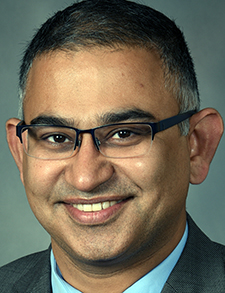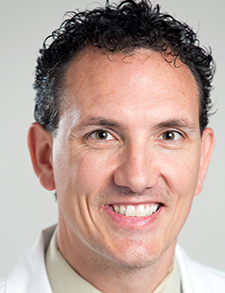 Every academic hospital medicine leader has two bosses: one on the academic side, through the school of medicine, and one on the hospital side, often reporting to someone in the C-suite, given its financial support of the program. Unfortunately, the priorities of the two bosses aren’t always aligned.
Every academic hospital medicine leader has two bosses: one on the academic side, through the school of medicine, and one on the hospital side, often reporting to someone in the C-suite, given its financial support of the program. Unfortunately, the priorities of the two bosses aren’t always aligned.
So how to best navigate multiple masters? How to learn how best to satisfy clinical, educational, and scholarly activities?
Well, clearly by joining SHM’s Academic Leaders Special Interest Group (SIG).

Dr. Chadha
“Everyone is doing innovation in their own small silos or niche areas, and we just wanted to create a network where we are all talking to each other, bringing out the problems, solving as a group,” said SIG chair Romil Chadha, MD, MPH, MBA, SFHM.
“Whether we’re initiating a non-resident service or justifying our subsidies to a hospital when they come into question, APP structure, leadership structure, or having residency challenges and needing to redesign the resident teams, what we’ve found is a lack of a centralized forum for people to learn from each other,” said vice chair Kendall Rogers, MD, CPE, SFHM. “We really saw the need for having academic leaders to have this forum to discuss these complex issues.”

Dr. Rogers
Drs. Chadha and Rogers see the SIG as a repository of “social proofing,” where hospitalists and others associated with hospital medicine can learn novel solutions to problems they are facing, or just be validated by learning that their solutions have worked elsewhere. Dr. Chadha, chief medical information officer of the University of Kentucky Healthcare in Lexington, Ky., and prior chief of its division of hospital medicine said, “No one has found all the solutions, and that’s why we are here to work together to advance our specialty”.
“Similar to other programs, my institution values when I can refer to other institutions who have proven a certain way of doing things,” said Dr. Rogers, chief of the division of hospital medicine and professor at the University of New Mexico Health Sciences Center in Albuquerque, N.M. “Even if it’s the same thing that I’ve been advocating for, showing examples from other respected institutions, approaching a certain problem a certain way gives that external authority to help with local negotiations.”
“For a lot of us, we don’t even realize the problems we’ve already solved,” Dr. Rogers said. “It’s only when we hear someone else struggling with something that we realize a strength we have at our local environment, some process, some staffing aspect that we’ve already solved and now take for granted. So, we all have something we can learn from each other because we’re at different stages and settings.”
Dr. Rogers has hoped for years to develop a peer-mentoring program. That initiative—which he hopes will generate grassroots support—could include traveling to sites where national leaders work, or paying for them to travel to other institutions.
“It’s my hope to figure out a way to create a peer-exchange program where a new division or section chief can have a more experienced leader come in and visit their program and offer direct advice and mentorship,” he said. “There’s only so much you can do through Zoom or someone reporting to you what their program’s like. I’ve found seeing things first-hand is a whole exponentially higher in the content delivery and the information exchange that can occur. In addition, I have found that the person visiting gains as much from the experience as they deliver.”
Dr. Chadha wants as many high-level leaders in the SIG as possible, but he doesn’t draw the membership line at senior staffers only. “We do view it as a must for the academic division chiefs and it is strongly encouraged for next-reporting lines,” he said. “Everyone who reports to the division chief should be there. But, at the same time, I didn’t know what hospital medicine would be like unless I saw some mentors or looked at it closely.
“A medical student goes through many experiences before they decide what they want to practice. So, similarly, it is a good opportunity for people to see what working as a division chief or academic leader at an academic center for hospital medicine would look like. If you like it, you stay. If you don’t like it, you move on.”
Drs. Chadha and Rogers also note that for early-career physicians and others, joining the Academic Leaders SIG could be their first chance to step back from their daily work to see how pieces work more systematically.
“This may be one of the first times when people start to see how metrics or an organization works, where there are dotted lines and many people are different,” Dr. Chadha said. “That’s when reading the room, the art of negotiation, bringing the common interests together, how can that happen, all those things become extremely important…they can create these connections, they can find those mentors, they can learn from the repository and conversations. We hope more leaders join this resource, as we have so much to learn from each other.”
Richard Quinn is a freelance writer in New Jersey.